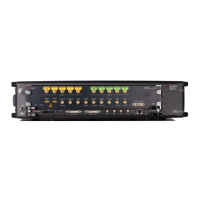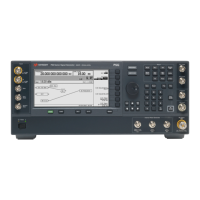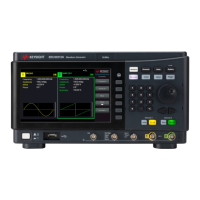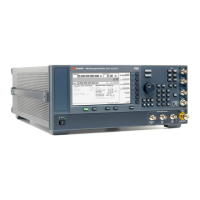77
Chapter 4 Calibration Procedures
Frequency (Internal Timebase) Adjustment
4
4
Frequency (Internal Timebase) Adjustment
The function generator stores a calibration constant that sets the VCXO
to output exactly 10 MHz.
1 Set the frequency counter resolution to better than 0.1 ppm and the
input termination to 50 Ω (if your frequency counter does not have a 50 Ω
input termination, you must provide an external termination). Make the
connections shown below.
2 Use a frequency counter to measure the output frequency for each setup
in the following table.
* Constants are stored after completing this setup.
3 Using the numerical keypad or knob, adjust the displayed frequency at
each setup to match the measured frequency. Select ENTER VALUE.
4 After performing setup 5:
a. If your calibration procedures require you to verify the adjustment
just made, exit the calibration menu and perform “Internal
Timebase Verification”, on page 62.
b. If you are making all the adjustments and then verifying the
instrument’s performance, continue with the next procedure in
this chapter.
Nominal Signal
Setup Frequency Amplitude
2 <10 MHz 1 Vpp Output frequency is slightly less than 10MHz
3 >10 MHz 1 Vpp Output frequency is slightly more than 10MHz
4 ~10 MHz 1 Vpp Output frequency should be near 10MHz
5* 10 MHz 1 Vpp Output frequency should be 10MHz ±1ppm
